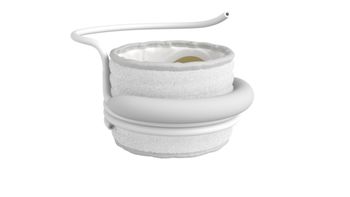
Primary care physicians may be key to improve hepatitis vaccination
A new study reveals that primary care offices are the best place to receive hepatitis vaccines, but more work is needed to improve timing.
Hepatitis infections are vaccine-preventable, yet they remain on the rise. Primary care physician practices are the ideal-and preferred-location to recommend and administer these vaccines, according to a new report.
Published in Preventive Medicine Reports, the
Hepatitis A and B are both viral infections that are vaccine-preventable, yet they are on the rise, according to the Centers for Disease Control and Prevention (CDC), with hepatitis A rising by 12 percent and hepatitis B by 21 percent from 2014 to 2015. Numerous outbreaks have occurred in the years since, according to CDC, hitting at-risk populations such as homeless individuals and illicit drug users the hardest.
Physician recommendations have been a top influencer of adult decisions to receive hepatitis A and B vaccinations, according to the report.
“Hepatitis A and B vaccination coverage is suboptimal in the US, including for those at increased risk for hepatitis infection. In the context of enhancing patient care, our results underscore the need of increasing awareness among primary care providers of the ACIP recommendations for vaccinating adults at increased risk for hepatitis A or hepatitis B infection,” according to a statement from the research team that conducted to the report. “Our research also highlights that time to initial hepatitis vaccination from first at-risk diagnosis needs improvement.”
In the new retrospective study, researchers investigated data from 2007 to 2015 to determine what types of providers and locations are most common for hepatitis vaccination, whether there are differences between Medicare and commercial insurance patients, and what the estimated time from first diagnosis of a condition to initial vaccination was.
Of the more than 180,000 patients identified who had received the hepatitis A vaccine and the roughly 148,000 who received the hepatitis B vaccine, family and internal medicine providers were the top administrators, with about 50 percent of these providers vaccinating against hepatitis A, and about 64 percent against hepatitis B. More than 90 percent of these initial vaccination occurred in a family medicine or internal medicine office.
“We found that physicians in primary care were the main providers of the hepatitis vaccines,” the research team said. “While some patients may have conditions for which the Advisory Committee on Immunization Practices (ACIP) recommends hepatitis B vaccination, it is quite uncommon for physicians in other medical specialties, such as infectious disease, gastroenterology, nephrology, to provide the hepatitis vaccines.”
As far as vaccination time from first at-risk diagnosis, the study found that the average was 11.8 months for hepatitis A, 20.9 months for hepatitis B, and 20.9 months for hepatitis A and B. Further research is needed to design strategies to shorten the length of time from diagnosis to vaccination, the report noted.
“This finding was the most surprising and highlights the need for further research to see if median time to initial vaccination after diagnosis of an at-risk condition could be decreased,” according to the research team.
As to how the time frame for administering vaccines after first recognizing a patient as high risk, the study gave a few suggestions, but more research is needed.
“The CDC recommends the use of evidence-based strategies, such as provider reminder/recall systems, standing orders and provider education programs, to reduce missed opportunities to vaccinate eligible persons,” the research team said. “For example, the use of electronic medical record reminders have been shown to be effective in increasing the uptake of hepatitis B vaccination among persons with diabetes.”
Newsletter
Stay informed and empowered with Medical Economics enewsletter, delivering expert insights, financial strategies, practice management tips and technology trends — tailored for today’s physicians.








